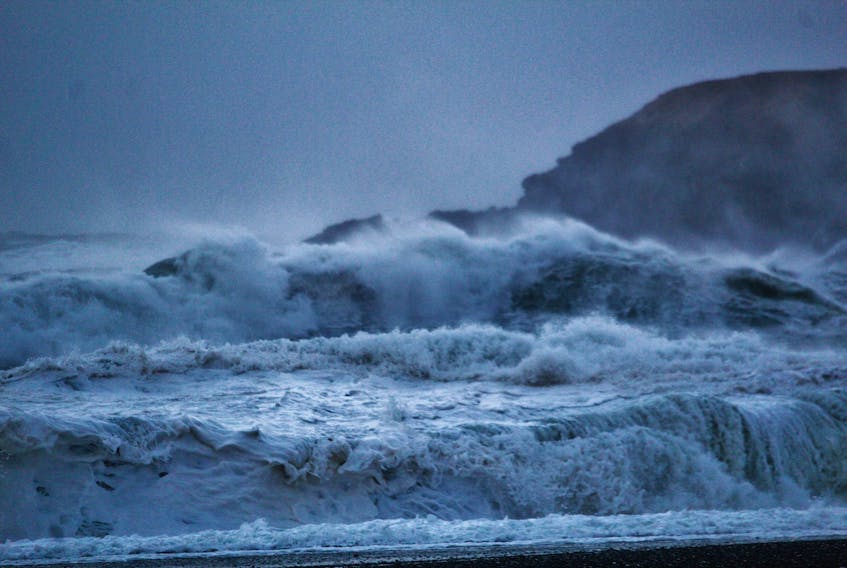
What do you think of when you hear the words “ocean economy”?
If you’re from Newfoundland and Labrador, you might think of something like the fishery. Oil and gas maybe?
You’d be partially right.
Of course, ocean economy refers to everything that goes on that relates to the ocean. So yes, the fishery was the mainstay of Newfoundland and Labrador’s ocean economy for centuries. And since first oil in the 1990s, oil and gas has become, by far, the biggest driver in our provincial economy — ocean or otherwise.
But the ocean economy is a bigger picture.
A much bigger picture. The only problem is a lot of people don’t think in terms of an overall ocean economy. Instead, they focus on one particular chunk at a time, be it the fishery, oil and gas or marine transportation, for example.
But looking to our economic future, it’s important for more people to be looking at that bigger picture.
That’s why OceansAdvance did a study earlier this year on just how big N.L.’s total ocean economy is. And it’s eye-opening reading. OceansAdvance has representatives from the research, academic, industry and government fields working to foster ocean technology. It commissioned Caron Hawco of the Caron Hawco Group to research and crunch the numbers.
Newfoundland and Labrador’s total ocean economy is worth $16 billion a year and employs 37,000 people — that makes it the biggest single ocean economy in Canada.
Bigger than B.C., which I’d assumed would have a bigger ocean economy than ours, just given the size difference. In fact, N.L. represents more than half — 53 per cent — of Canada’s total ocean economy.
I think that’s worth a certain amount of pride.
But it’s hard to be proud of something if you don’t realize it in the first place.
Part of the reason OceansAdvance undertook this study was to quantify our ocean economy. Now they plan to spread the word, through all levels of government, industry, the R&D sector, academia and the public.
Because the more people who realize the breadth and depth of our ocean economy, and the calibre of our ocean research, innovation and technology, the better positioned we are to expand it.
“I think the industries operate in silos, so as a result, you don’t have a lot of that cross-connection going on,” Hawco said. “The fishing industry does talk to oil and gas, but it’s at a peripheral level. I think with recent days we’re seeing that they’re all starting to come together to start to do more collaboration and it gives them a reason to start talking about the bigger picture.”

That fits with the move towards fostering more co-operative, cross-sector projects in ocean technology development and research.
“It’s to get kids excited about ocean technology, ocean industries,” OceansAdvance CEO Cathy Hogan said. “Part of my reason for being excited about this is getting it out to parents and teachers, getting them excited about the fact that having a life now in ocean tech is not what your grandfather did 50 years ago.”OceansAdvance is also working with the Ocean Learning Partnership to get the message out to schools that the ocean economy has a lot to offer.
Hawco and Hogan hope to start a conversation locally, nationally and globally, about how strong Newfoundland and Labrador is in the ocean economy sphere and how much stronger it can become.
“I think it will build our reputation and our brand throughout Atlantic Canada, across the country and internationally,” Hogan said.
“We’re national leaders in this area, so why wouldn’t we build on this? It seems an obvious area for growth in the province,” Hawco added.
Organization for Economic Co-operation and Development (OECD) stats from 2010 show the global ocean economy was worth US$1.5 trillion and represented about 31 million direct, full-time jobs. By 2030 those numbers are projected to more than double, to US$3 trillion and more than 40 million full-time equivalent jobs.
Now, apply that to this province.
If we’re currently seeing $16 billion and 37,000 jobs from the ocean economy, it’s not inconceivable that by 2030 we’ll see a commensurate rise, too.
And for a province constantly faced with the need to diversify its economy, we’d be foolhardy not to recognize the opportunities off our coasts.
But the first step is spreading the word.
Newfoundlanders and Labradorians aren’t known for running around hooting “We’re No.1! We’re No.1!”
But when it comes to being Canada’s ocean economy powerhouse, and being recognized around the world as among the best when it comes to ocean tech R&D, maybe a little more pride wouldn’t go astray.
Mark Vaughan-Jackson is The Telegram’s business editor. He can be reached at [email protected].









